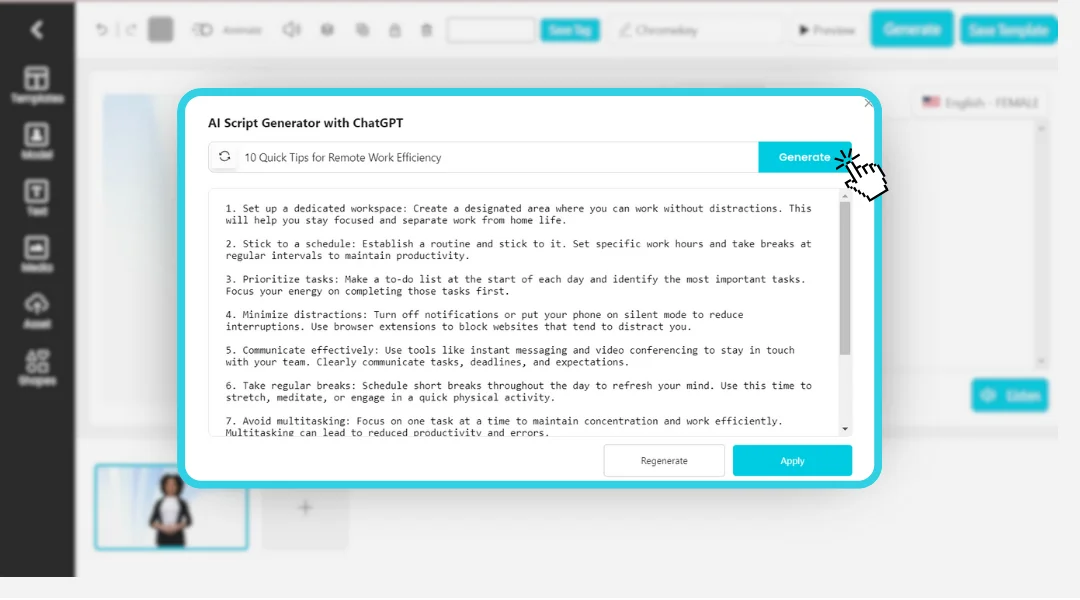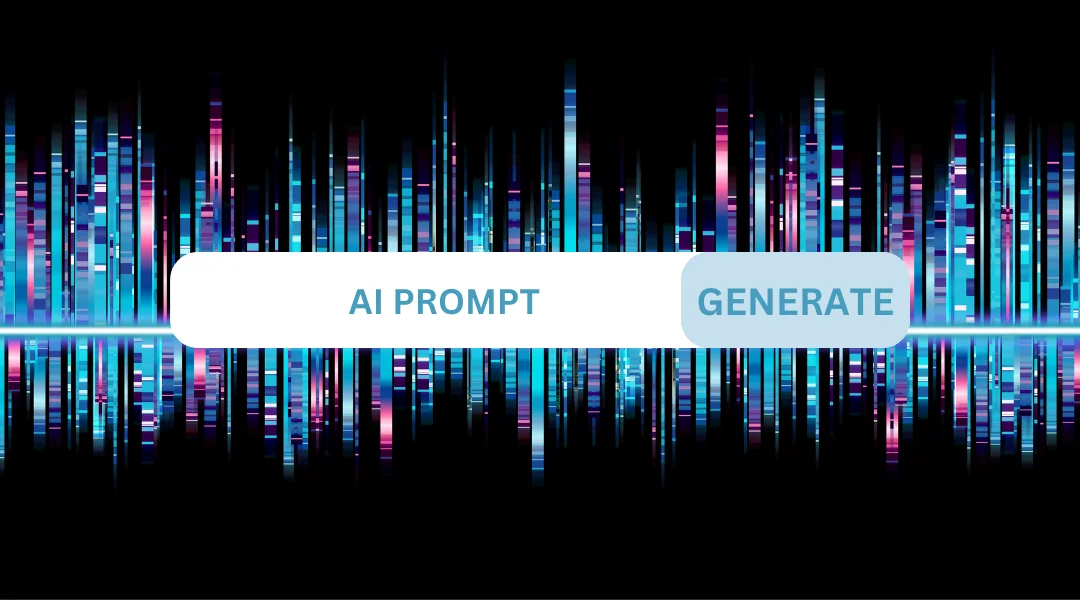How Do AI Prompts Drive Machine Creativity?

Imagine standing before a canvas, paintbrush in hand, with a myriad of colors at your disposal 🎨. Now, what if you could simply voice your vision, and the painting would unfold before your eyes? This is the essence of AI prompts – the magic words that breathe life into artificial intelligence, creating a bridge between human imagination and machine execution 🌉. But how does this technology work, and what are its implications for the future of innovation 🤖? Have you ever wondered about the extent to which a simple line of text can empower machines to generate content, solve complex problems, and even mimic human creativity 🧠?
The concept of AI prompts might seem like a page taken straight out of a science fiction novel, yet it is a reality that is transforming industries and redefining the boundaries of what machines can achieve ✨. In this blog post, we'll peel back the layers of AI prompts to uncover the intricate workings of this technology 🔍. From the basic understanding of AI prompts to the sophisticated capabilities of AI prompt-based systems, we'll explore how AI studios are leveraging this technology to create features that were once thought impossible 🚀. But, is there a line that shouldn't be crossed ❓? We'll also delve into the common misconceptions and concerns surrounding AI prompts, and why it's crucial for us to comprehend their capabilities and limitations ⚖️.
Understanding AI Prompts
An AI Prompt is the catalyst in the interaction between a human and artificial intelligence. It goes beyond a simple command; it is a nuanced exchange designed to elicit a particular outcome from an AI system. Think of an AI prompt as a conversational thread that can lead to an articulate response, a completed task, or the creation of new content. This interaction is hinged upon the user providing clear and concise instructions that the AI is programmed to understand and act upon.
The intricacy of an AI Prompt can vary greatly, ranging from a straightforward request such as "Play my favorite playlist" directed at a smart speaker, to a layered and specific command like "Create a month-long social media content plan focused on environmental awareness." In the former, the AI requires minimal context to fulfill the task while, in the latter, the AI would need to tap into a broader knowledge base and applied creativity to generate a useful and informed response.

AI Prompts serve as the cornerstone for a vast array of applications. In customer service, an AI prompt can initiate a support ticket or guide a user through troubleshooting steps. For content creators, prompts can fuel the generative engines of AI to produce written text, graphics, or videos tailored to a particular audience or theme. In a learning environment, AI Prompts can be strategically posed to invoke critical thinking and reflection from students interfacing with educational technology.
But the effectiveness of an AI Prompt is not solely dependent on its complexity. The clarity of the instruction, the specificity of the information provided, and the context around the task all influence the AI’s performance. A well-crafted prompt can harness the full potential of the AI, allowing it to operate efficiently and creatively, providing outputs that are valuable and often, impressively human-like.
As AI continues to weave itself into the fabric of daily life, understanding and utilizing AI Prompts effectively will become a critical skill. It's like learning a new language—one where fluency means being able to harness the potential of AI to accomplish tasks and solve problems with unprecedented speed and efficiency.
Types of AI Prompts and AI Studios Features
AI Prompts play a pivotal role in how we interact with AI-driven technologies. Each prompt type caters to a different kind of interaction, whether it be through written text, visual cues, auditory commands, or behavioral recognition. Below is an enhanced classification that not only outlines the common types but also integrates AI Studios' groundbreaking feature within the textual prompts category:
| Type | Description | Examples | AI Studios Features |
|---|---|---|---|
| Textual Prompts | Written instructions or queries for text-based responses. | Chatbots, virtual assistants, text completion tools. | Scriptwriting with ChatGPT for AI video generation |
| Visual Prompts | Inputs involving images or videos for visual analysis or generation. | Image recognition, artwork creation from descriptions. | |
| Auditory Prompts | Spoken commands or questions for task performance or information retrieval. | Virtual assistants like Siri or Alexa. | |
| Behavioral Prompts | Observations of user behavior for recommendations or predictions. | Browsing patterns, shopping habits. |
AI Studios' Textual Prompts Feature in Detail
The addition of AI Studios' feature within the textual prompts category is a testament to its innovative approach in AI video generation. The ability to automatically write video scripts using ChatGPT is one of its standout features. The process begins simply by selecting a topic. With this input, AI Studios' AI can craft a coherent and compelling script swiftly, making what would typically be a time-consuming task, both straightforward and efficient.

To utilize this feature effectively, one would begin with crafting a video script to organize their narrative. Not only does this ensure a smoother content flow, but it also guides the subsequent steps in video creation. AI Studios' template selection streamlines the creation process further, enabling users to pick a style that resonates with their vision. Following this, the user types the text into the chosen template. AI Studios’ technology takes this written content and transforms it into a synchronized combination of visuals and audio, amplifying the intended message of the video.
The cherry on top is the personalization capability—users can enhance their videos by adding custom images or videos, either from AI Studios’ extensive media library or by uploading their own. Upon finalizing all the creative elements, a single click on the "Generate Video" button brings the AI-generated video to life.
This feature is a leap forward for content creators, educators, marketers, and anyone looking to produce high-quality videos with ease. It exemplifies how AI Studios harnesses textual prompts to revolutionize video creation, making it not just user-friendly but also incredibly efficient.
Capabilities of AI Prompt-Based Systems

AI systems designed to respond to prompts have a wide range of capabilities, including but not limited to:
- Natural Language Processing (NLP): Understanding and generating human-like text.
- Computer Vision: Interpreting visual information from the world, such as identifying objects in images.
- Speech Recognition: Translating spoken words into text and understanding their meaning.
- Predictive Analytics: Making predictions based on data patterns and past behavior.
- Creative Generation: Producing original content, such as stories, music, or artwork, based on descriptive prompts.
Leveraging AI Prompt Technology in Industry Innovation

The integration of Artificial Intelligence (AI) into various industries has been nothing short of revolutionary. With AI prompt technology at the forefront, companies like DeepBrain AI are creating solutions that are not only innovative but also deeply personalized and engaging. This advanced technology allows for the creation of lifelike avatars that can interact with users in real-time, providing a level of service and experience that was once thought to be the realm of science fiction. Here are some compelling examples of how DeepBrain AI is utilizing AI prompt technology to make a significant impact across different sectors:
| Industry | Use Case | Description |
|---|---|---|
| Customer Service | AI Prompt-based Avatars | Utilizing AI prompt technology, DeepBrain AI has developed avatars that can engage with customers in real-time, providing solutions and assistance with an unprecedented personal touch. These avatars respond to prompts and queries in a conversational manner, mimicking human interaction to enhance the customer service experience. |
| Healthcare | Interactive AI Doctors | In partnership with companies like Roche, DeepBrain AI has unleashed the potential of AI doctors, which are powered by AI prompt technology to deliver medical advice and services instantly. These AI doctors can process patient prompts and provide relevant, personalized information, changing the dynamics of patient care. Similarly, the AI Esther initiative harnesses prompt-based interactions to disseminate medical knowledge efficiently. |
| Education | Metaverse AI Tutoring with Prompt Responses | DeepBrain AI's collaboration with Kyowon Red Pen has led to the creation of AiCANDO—a metaverse platform where AI Tutors, equipped with prompt technology, provide individualized teaching and support. This includes the popular AI Tutor Ddotty, who uses real-time interactions and prompt responses to guide and motivate elementary students. |
| Entertainment | AI-Powered Video Production | Content creators and marketing agencies benefit from DeepBrain AI's prompt technology, which streamlines video production by automating editing tasks. This enables the creation of engaging and informative content with ease, leveraging AI to handle the prompts of video editing software. |
By harnessing the power of AI prompt technology, DeepBrain AI is not just enhancing user engagement but also revolutionizing operational efficiency across industries. This approach is paving the way for more human-centric and interactive experiences, setting a new standard for the use of AI avatars in various fields.
Common Misconceptions and Concerns
Despite the many benefits of AI Prompts, there are misconceptions and concerns that need to be addressed:
- Privacy: The use of behavioral prompts raises concerns about user privacy. It's crucial for AI systems to have robust privacy protections and for users to be informed about data usage.
- Accuracy: AI systems are not infallible and can misinterpret prompts, leading to incorrect or nonsensical responses. Continuous training and improvements are necessary to enhance accuracy.
- Creativity: There's a belief that AI cannot be truly creative. While AI-generated content may not replace human creativity, it can serve as a tool for inspiration and collaboration.
- Job Displacement: The fear that AI will replace human jobs is prevalent. However, AI is often used to handle repetitive tasks, potentially freeing up humans to focus on more complex and creative work.
Why Is It Crucial to Understand the Capabilities of AI Prompts?

AI Prompts serve as the bridge between human intelligence and artificial intelligence, enabling us to harness the power of AI in a controlled and interactive manner. They have become an integral part of various technologies, making our interactions with machines more natural and intuitive. As AI continues to evolve, the potential applications for AI Prompts will expand, offering exciting opportunities for innovation across all sectors.
Understanding AI Prompts is just the beginning. As we continue to integrate AI into our daily lives, it's essential to stay informed about the capabilities and implications of these technologies. By doing so, we can ensure that AI serves to enhance human potential and address the challenges of the future.




